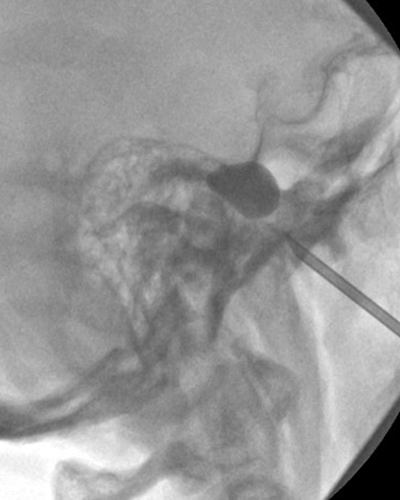Trigeminal Neuralgia
Once diagnosed, help is available through application of multiple treatment methods
Pain due to trigeminal neuralgia usually occurs as short attacks in the face mostly on one side. Pain is very debilitating and is triggered by talking, chewing, brushing teeth, washing face, cold air exposure, combing hair, shaving or any other activity. In many patients there is a blood vessel which may be compressing the trigeminal nerve in side skull (head) and it is usually visible in a special MRI scan of brain.
Often in small number of cases this pain is related to multiple sclerosis, brain tumour and other neurological disorders and no specific cause can be found. Carbamazepine (tegretol), an antiepileptic medication is very effective to control this pain but has tolerance problems because of side effects related to memory, tiredness and effect on liver and blood sodium levels.

Trigeminal Balloon Compression
Treatment Methodology
I am able to offer thorough assessment and provide diagnosis and also prepare a care plan based on your preferences. As a specialist in chronic pain treatment, following are the steps which I follow with my patients –
- Determining if your condition is chronic pain on basis of thorough assessment
- Explanation of most likely cause of your pain and likely long term outcome
- Investigations if required including special MRI scan with dye
- Listing out possible treatment options
- Striking a balance between minimal and advanced procedures for alleviating pain
- Prescribing appropriate pain killers as per your chronic pain condition
- Plan may include -
• Treatment with medications
• Radiofrequency treatment of trigeminal nerve ganglion
• Balloon compression of trigeminal nerve ganglion
• Referral for brain surgery to release nerve from blood vessel if this is indicated
• Referral for gamma knife surgery to help with pain
• Pain Management Programme which might be rarely needed to facilitate self management of pain
- Using state-of-the-art equipment, facility and highly skilled and passionate team
